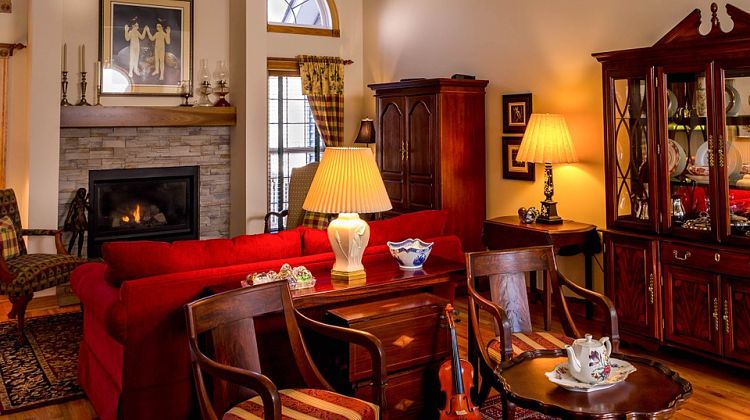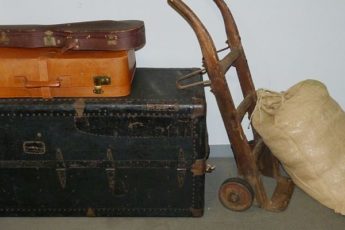
I think that when it comes to protecting furniture during a move, I can consider myself as a pro already. During the past few years, my family and I had several moving occasions due to reasons I could not count anymore. Because of that, each move made me wiser and better when it comes to protecting the things I invested money in, to make sure that their quality of beauty would be preserved.
Moving is an exciting event in your life because you feel that you are in a different world, where everything seems fresh and new. It is a different story though if you see your furniture with dents and scratches because you were not able to make the proper protective covering for your furniture, that could have prevented the damage.
Anyway, to make sure that your furniture will still have the same quality when it reaches your new home, here are some pointers to consider:
Get Rid Of Unwanted and Old Pieces
When you think of decluttering, you typically imagine yourself getting rid of relatively small items, such as broken equipment and unused clothing. However, clearing out outdated furniture before the relocation is even more important. It’s time to get rid of everything that is outdated and uncomfortable.
Furniture can significantly increase the burden and cost of your move due to its weight and mass, especially if it needs to be disassembled and then put back together.
You might decide to store your furniture while you’re away if you’re planning a long-distance or international move for a period. Decluttering is crucial in this situation, so you don’t have to pay to store things you don’t truly need.
Prepare Your Furniture
Make sure to give your furniture a thorough cleaning and dusting before you begin packing. During the moving process, dust and other particles can harm hard surfaces. Cleaning the furniture before you move will help prevent you from bringing more dirt into your new residence.
Remove any knobs, casters, or pulls from your furniture by taking a few moments. Desks and dressers should have their drawers removed so that other objects can be placed inside. You have more storage space as a result, and you can move heavy furniture more easily.
Take Furniture Measurements
It would be incredibly unpleasant if part of the furniture wouldn’t fit through the doors and staircases of the new home or if it wouldn’t match the interior design of its corresponding destination rooms after spending a lot of time and money packing it for moving and carrying it to the new place.
To ensure that the unfortunate occurrence mentioned above never occurs, have a floor plan for the new house.
Remove Drawers
If you have cabinets, chests, and consoles, that have drawers, you have to make sure to empty the drawers and clean the surface before the move. The things inside the drawers can scratch the inner part of your furniture, which is not a good thing at all. As a homeowner, you do not want to damage any of your furniture inside and out.
Disassemble Your Furniture
Always thoroughly disassemble your furniture. Couches and tables should be without their legs. Disassemble bed frames. Removing the cushions, in other words, taking apart furniture if it can be done so securely. By doing this, the furniture will be simpler to transport and less likely to scratch up walls or door frames. Additionally, it will make loading your moving truck simpler.
Protect Your Furniture
Your home might also have some IKEA furniture pieces, or perhaps furniture that can be assembled and disassembled. For instance, a bed frame can be disassembled, and you need to do that because of three things:
– So it will not eat up a lot of space in your truck during the move
– So that packing will be easier
– So that dents, breaks, or other damage will not happen
Wrap your hardwood furniture with thick blankets to ensure that the surface of the wood will not be damaged. I personally like blankets over bubble wraps when it comes to larger wood objects because bubble wraps just will not do if you have heavy items such as wooden tables, cabinets, and chairs.
Don’t Overdo With Packing Tape
When using packaging tapes on furniture, make sure that you do not stick them directly, because this might just chip off the paint. What you can do is use cardboard or plastic before taping the furniture, to protect the surface of your items when unpacking them.
You should also make sure that you are using a large enough truck that can fit everything that you need to bring with you during the move. This will prevent you from overloading, which can lead to damaged furniture pieces.
Moving Glass Pieces
Be particularly careful since if dropped on the floor, those glass parts would break quickly and if you’re not careful enough, they could easily cut you. Ensure that you take out all glass from your furniture pieces, including the doors, shelves, panels, etc. After removing them, wrap them in moving blankets and bubble wrap. If you are unable to remove the glass from your furniture, cover the pieces with cardboard cutouts and tape them in place.
Protect Your Floors and Walls
On a moving day, floors and walls also need some tender loving care. Wrap table legs, and other sticky-out parts with bubble wrap, or floor sliders to protect your floors and walls. Lay down a layer of protection on the ground using temporary flooring materials, corrugated cardboard, or old blankets that you were going to throw away otherwise.
Lastly, if you want to make sure that all of your furniture will be safe when it reaches your new home, try not to stack them on top of one another when loading it inside the truck. Take your time, because you have all day to move them anyway. Try not to do them quickly; because the more you choose to do them quickly, the more likely it is for you to lose concentration on how to properly stack them.
It goes without saying that there is no way to ensure that your furniture will get to your house in pristine shape. You can at least avoid any needless damage by carefully wrapping and packing them. By doing this, you can assist protect the security and integrity of your furniture during the move.





Leave a Comment